Cities / Public health
Tackling childhood obesity: a case for hyperlocal inclusive design with the Stockwell Estate in London
By Carmel Keren, Gail Ramster and Jak Spencer | 08 Jan 2019 | 0
Tackling childhood obesity is a major challenge in housing estate communities, where many of the poorest Londoners reside. This research paper focuses on a residential community on the Stockwell Estate, London.
Authors of scientific paper:
Abstract
In the UK, nearly a third of all children under 15 years old are currently obese, with rates increasing. London is one of the UK’s most at-risk areas, with the highest rates of childhood obesity seen in its most deprived areas and certain minority ethnic groups disproportionately affected.
Tackling childhood obesity is a major challenge in housing estate communities, where many of the poorest Londoners reside. This research focuses on a residential community on the Stockwell Estate, London. The project uses an inclusive design approach, specifically ‘designing with communities’ in order to develop innovative and meaningful interventions to address this alarming health crisis. While other active research projects exploring childhood obesity are approaching the challenge from a clinical, street or school level, this hyperlocal project focuses on the city environment of a housing estate locality.
In the first phase, key stakeholders were identified from local organisations, such as the local authority, health practitioners, youth services and businesses, as well as the community. Several different design research activities were developed with these stakeholders in order to understand the context, challenges and needs of the people, while also nurturing relationships to build trust and an understanding of each group’s motivations, priorities and objectives.
Through mapping the factors that play a role in childhood obesity and insights from the stakeholder groups, as well as the different potential audiences involved (babies, pre-schoolers, primary or secondary-age children, pregnant women and parents), the research team produced a design brief grounded in insights from real people. From this, several ideas have been developed through co-creation and ideation processes with residents and stakeholders, using an iterative process of prototyping, testing and refining.
This paper will report on the results from the stakeholder research and co-creation stages, as well as reflect on the methodology and engagement strategies. The nine-month design research project will continue until February 2019, as the first part of a longer-term strategy for tackling childhood obesity nationally – and even internationally – within deprived inner-city neighbourhoods.
Keywords
This paper outlines a nine-month active design research project co-ordinated in collaboration with Hyde Foundation, the community investment arm of the Hyde Group, and Battersea Power Station Foundation, set in the south London neighbourhood of Stockwell.
The research focuses on Stockwell’s young people and families, and how a community-driven, design-led approach might have a positive impact on their health and wellbeing. While the project has a particular emphasis on tackling childhood obesity, this is considered in a deeply holistic way that attempts to examine all the complex, wide-ranging causes and effects surrounding the challenge of addressing childhood obesity. Specifically, the project focuses on the hyperlocal environmental factors that exist in Stockwell, with the ambition that its findings can eventually be developed and replicated on a wider scale.
The Battersea Power Station Foundation, as part of its research into community needs in the boroughs surrounding the Battersea Power Station site, identified childhood obesity as a priority theme for Lambeth. Partnering with The Hyde Foundation, a three-year collaborative innovation project was commissioned to reduce childhood obesity through design interventions on and around the Stockwell Estate, a group of housing estates in the Stockwell area managed by the Hyde Group.
The Royal College of Art’s Helen Hamlyn Centre for Design was appointed to carry out this design research project over nine months, which began in May 2018.
Setting the scene
In the UK, nearly a third of all children under 15 years old are currently obese, with rates on the increase. London has more overweight and obese children than any other global city, with the highest rates of childhood obesity seen in its most deprived areas.1 The relationship between childhood obesity and levels of deprivation is starkly evident. While just one in ten of children in the least deprived areas are obese, this figure soars to four in ten for children living in disadvantaged urban areas. This significant deprivation gap has increased by 50 per cent in the past decade and continues to grow.2
In 2016–17, 38.6 per cent of Year 6 (10- to 11-year-old) children in London were classified overweight or obese, above the national average of 34.3 per cent. The London Borough of Lambeth, where this case study is set, is reflective of the capital as a whole. Here, 37.9 per cent of 10- to 11-year-olds were in this category, 24.6 per cent of which were classified obese.3 In the ward of Stockwell, this figure stands at 27.6 per cent.4 Together with this, the London Borough of Lambeth is the 14th most deprived in the country and fifth in London. Moreover, Lambeth has several pockets of extreme deprivation, including in Stockwell itself, which are considered to be within the 10-per-cent most deprived in the country.5
Furthermore, Stockwell is also characterised by having the borough’s highest proportion of households where English is not the first language (17.8 per cent) and the second highest density of residents per sq km. Forty-four per cent of Stockwell’s population are from BAME backgrounds, with the largest migrant population from Jamaica (3 per cent), Portugal (2 per cent) and Poland (2 per cent).4 It’s this densely urbanised environment with pockets of severe deprivation and an extremely multicultural population that sets the project in context.
As well as its physical context, the project sits within an academic context with a variety of existing research projects exploring childhood obesity in London and beyond. A recent report published by Guy’s and St Thomas Charity, ‘Bitesize: Breaking down the challenge of inner-city childhood obesity’,2 explores the issue of childhood obesity through the lens of urban, diverse and deprived environments.
Bitesize explores the rise of childhood obesity in deprived areas of London, focusing on the boroughs of Lambeth and Wandsworth in particular. The study looks at individual family case studies to bring to life the stories behind the statistics, and ties together the insights of a variety of experts – health specialists, research bodies, local headteachers, and local governmental bodies. While the report acknowledges the complexity of the issue of childhood obesity, its focus remains heavily weighted towards promoting a healthy diet above activity or any other factors contributing to childhood obesity in urban settings, stating that “no one can outrun a bad diet”.2, p15 Thus, the report advises adopting an 80-20 split between focusing on diet and activity, with no mention of other factors.
A more holistic approach was adopted in recent years in Amsterdam, where the number of overweight and obese children dropped by 12 per cent from 2012 to 2015.6 Rather than focusing on diet or exercise alone, the Dutch model seeks to change the entire culture and lifestyle of the city.7 Equal weighting was given to diet, activity and, crucially, sleep. Practical initiatives, such as installing a network of free and easily accessible water fountains across the city, were backed up with policies designed to help parents make healthier choices. The programme focused on reaching lower socioeconomic classes, in particular the minority ethnic groups that have higher rates of childhood obesity. The programme created a neighbourhood network that co-ordinated between schools, nurses, social workers, youth workers and central care providers.7 This systematic and collaborative approach, which addressed childhood obesity from various directions and across all scales – from the individual, the family, and up to government level – was crucial to achieving sustainable wholescale change.
In London, while such extensive solutions have yet to emerge, there have been some interesting small-scale, design-led placemaking interventions. The Healthy London Partnership’s Healthy High Streets programme, for example, looked to food businesses on the high street to provide localised initiatives aimed at involving the community in providing and promoting healthier food options. Similarly, ‘Box Chicken’, an initiative by Shift Design, also looked at challenging the prominence of fast food on the high street. Its intervention was to transform rather than restrict the intake of fast food, by using a mobile catering unit that specifically targeted young people outside schools in an attempt to provide a healthier alternative to the ubiquitous chicken shop. Another initiative focused on addressing the barriers facing low-income families in achieving a healthy diet. ‘Rose vouchers for fruit and veg’, run by the Alexandra Rose Charity, was a simple voucher scheme that supported people to purchase fresh food from local healthy high-street vendors and markets. This has encouraged families to adopt a healthy diet while also ensuring that money flows back into the local community.
This project aims to both fit within this growing network of initiatives and also build on their findings. While other active research projects exploring childhood obesity are approaching the challenge from a clinical, street or school level, focusing overwhelmingly on healthy eating, this hyper-local project concentrates specifically on the city environment of a housing estate locality. It also acknowledges and aims to address the myriad causes that contribute to childhood obesity, focusing on those areas that may be neglected by the existing array of projects and initiatives. The paper introduces this project, the justification of the methodology of co-designing with the community and the activities we undertook to realise it, and how these interventions will be both developed from community insights making them personal to the neighbourhood and its people, yet drawn from a process that is replicable and scalable across communities in the capital and beyond.
Methods
Inclusive design is a way of designing products, services and environments that include the needs of the widest number of people as possible without the need for specialist equipment or re-engineering. Originally used as a tool for innovation with older and disabled user groups, more recently it has been used to understand marginalised, overlooked or vulnerable populations to help innovation for the good of society.8 At its core is the use of co-design and participatory design to gain empathy with a wide range of users, acknowledging that people are experts in their own lived experience.9 It’s an established design research method that involves engaging real people as active authors in the design of their experiences.
Inclusive design is an appropriate tool to understand communities in deprived areas with a diversity of residents’ needs, frustrations, behaviours and aspirations to help in creative thinking to solve difficult social issues such as childhood obesity. Indeed, it’s these empathic, people-centred, action-led attributes of design that allow for novel and innovative approaches to difficult social challenges.10
During the initial mapping of prior research, and national and international expert opinion, the lead researcher identified four main themes that play a role in childhood obesity: lifestyle, education, nutrition and situational factors. These are highlighted in figure 1.
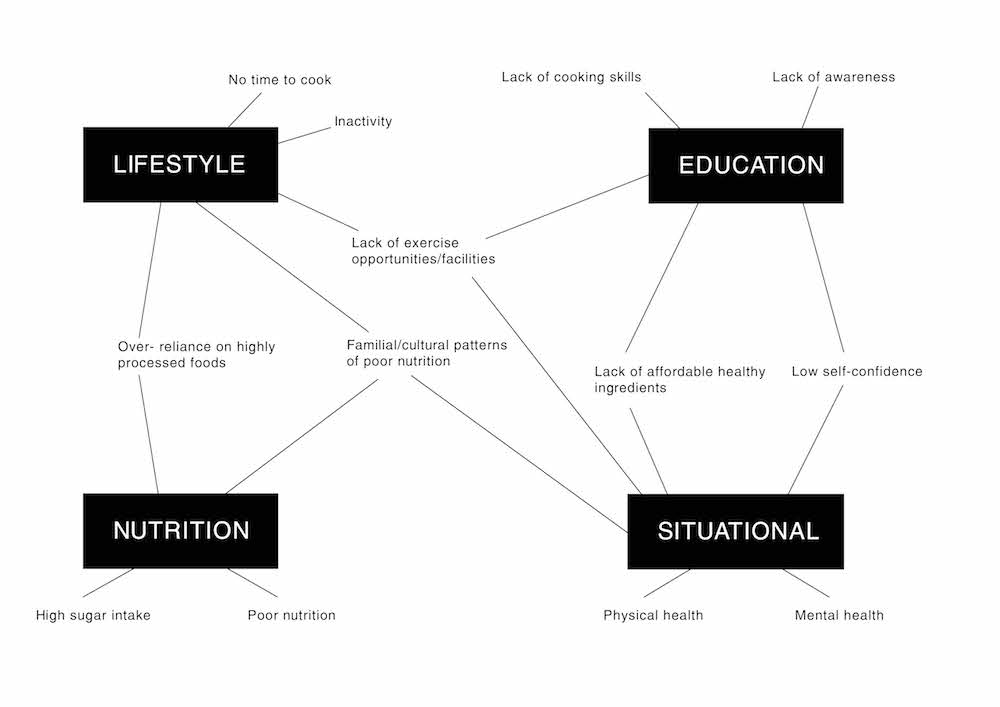
Building on this work, the first phase of research identified key stakeholders such as the local authority, health practitioners, youth services and local businesses, as well as the community itself. This approach focused on engagement on three distinct levels: neighbourhood, individual and experts (including community experts). Several different design research activities were used with stakeholders in each level in order to understand the context, challenges and needs of the people, while also nurturing relationships to build trust and an understanding of each group’s motivations, priorities and objectives. Engagement at the ‘neighbourhood’ level began with on-street activities, such as ad-hoc street interviews with parents and children around local playgrounds and schools in Stockwell, and meeting teenagers at the local youth centre. This was supplemented by participation in community groups and events, such as the baby and toddler group at the Tate South Lambeth library. Discussion was provoked using simple questionnaires, which focused on capturing individuals’ perceptions of health and wellbeing and how that related to their perceptions of the local environment.
In July, the project participated in the Stockwell Festival, a large annual community event that took place at the local park. For this event, the research team designed an engagement activity called ‘Map Our Stockwell’, which consisted of a large, 2 sqm illustrated map of Stockwell and its surroundings, designed specifically to highlight open spaces, schools and playgrounds (see figure 2). The map was placed on the ground as members of the public were invited to draw, write and comment on it as a way to facilitate a discussion about their perceptions, ambitions and aspirations for the local area (see figure 3). While this was not explicitly related to childhood obesity, the team focused on steering the discussion towards the health and wellbeing of children in the local area, with the aim of better understanding areas of opportunity for design intervention. 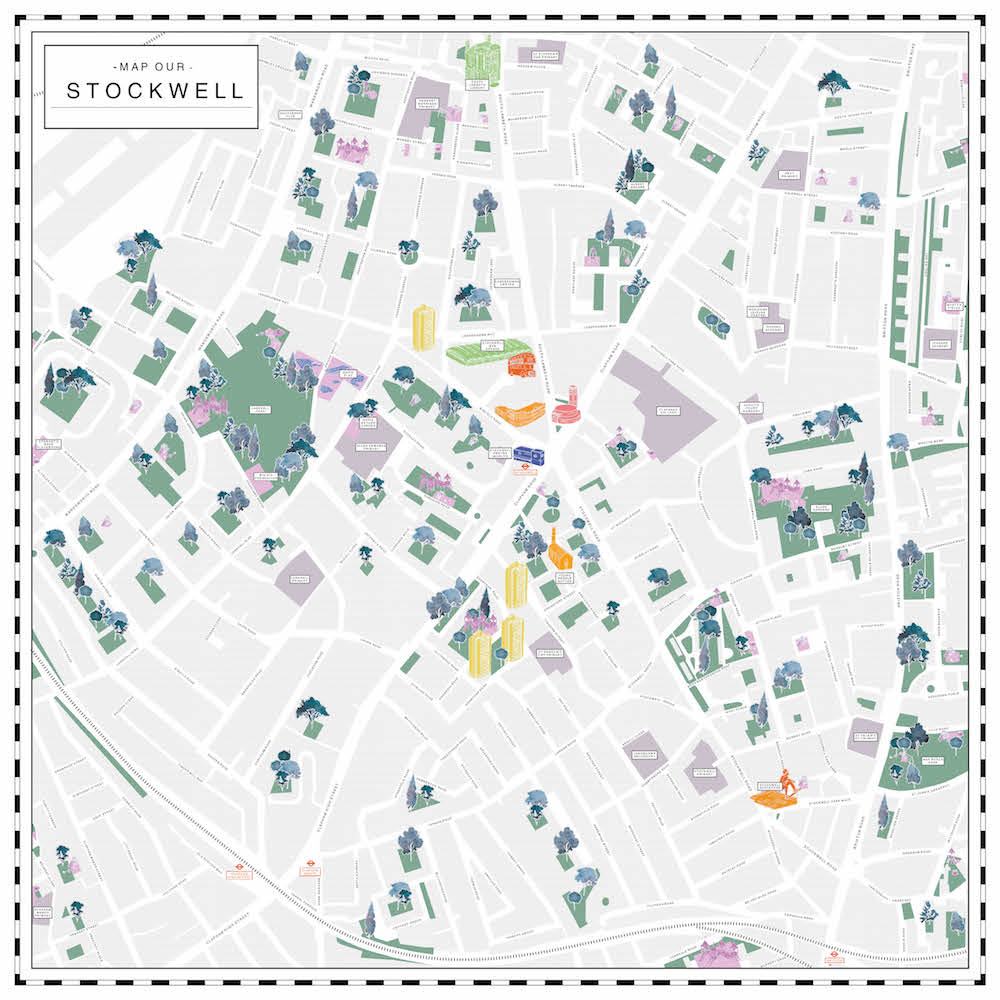
In gathering the insights gained through in-depth engagement at the ‘neighbourhood’ scale, the researcher revisited the project themes, refocusing these on challenges relevant to the hyperlocal area of Stockwell. Analysis was grounded in insights from real people gathered during the engagement activities. The local themes that emerged were ‘boredom’, ‘safety’, ‘high street’ and ‘cultural differences’ (see figure 4). Although the themes do not obviously or exclusively focus on the challenge of childhood obesity, they all arose from discussions around why people find it difficult for their children and themselves to live healthy, active lives. Refocusing the project in this way could address some of these local barriers and attract local buy-in. This would then inform the second half of the design research methodology, co-designing with the community. Where people who have a stake in a problem or challenge can be involved in developing solutions, the process is more democratic.11
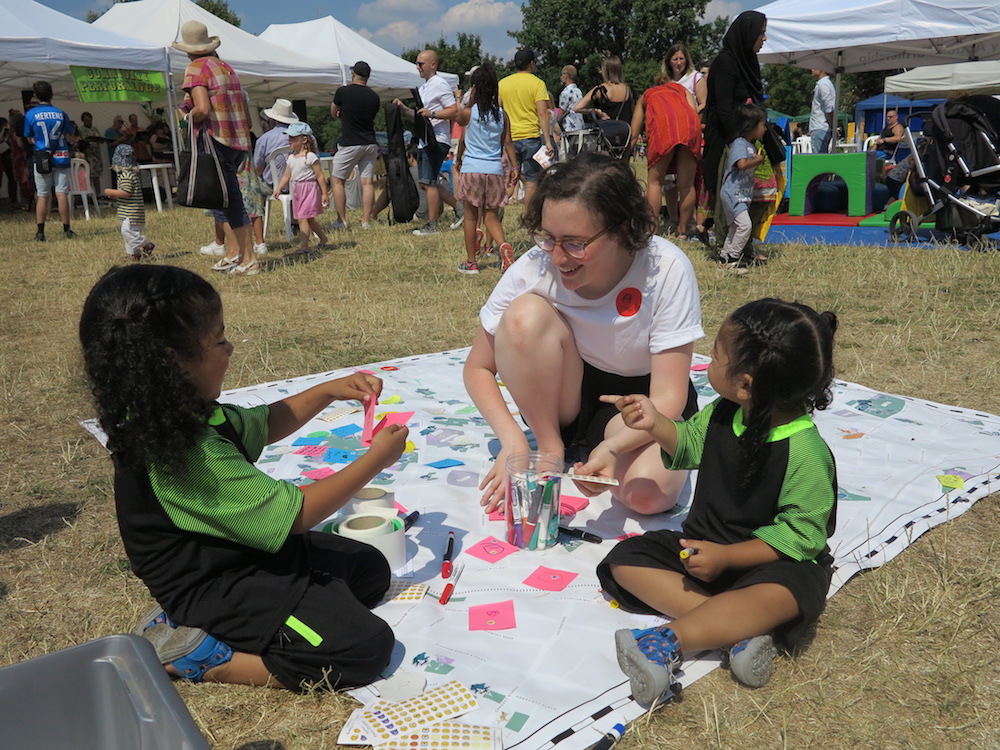 Participatory methods require trust (that people have the opportunity and the capacity to make a meaningful input), as well as a new set of skills and expectations on the part of the designer to act as a facilitator, understand people’s abilities and motivations, and create opportunities for participation accordingly. By continuing the involvement of expert, individual and neighbourhood stakeholders in the design of interventions, the Our Stockwell project would benefit from deeper understanding of the needs of a wider number of people, the creative input of those who live these challenges day to day, and through building capacity and community ownership of the interventions. This would support the continuation of the project in the medium term after the researcher’s involvement has ended, addressing in part the challenges of sustainability and legacy.
Participatory methods require trust (that people have the opportunity and the capacity to make a meaningful input), as well as a new set of skills and expectations on the part of the designer to act as a facilitator, understand people’s abilities and motivations, and create opportunities for participation accordingly. By continuing the involvement of expert, individual and neighbourhood stakeholders in the design of interventions, the Our Stockwell project would benefit from deeper understanding of the needs of a wider number of people, the creative input of those who live these challenges day to day, and through building capacity and community ownership of the interventions. This would support the continuation of the project in the medium term after the researcher’s involvement has ended, addressing in part the challenges of sustainability and legacy.
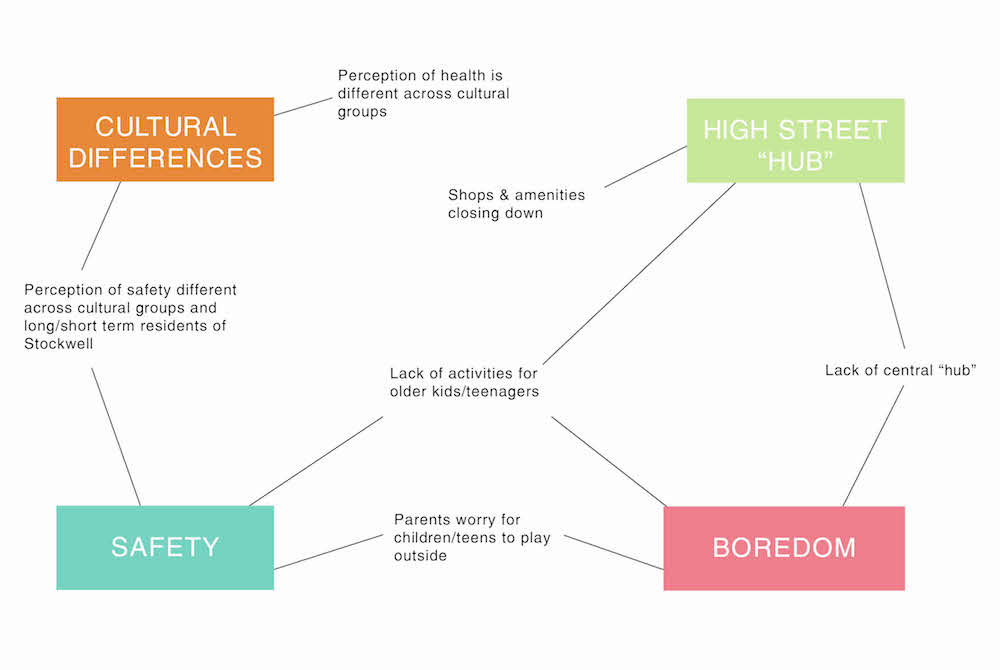
The four themes mentioned above became the foundation of the next stage of the project: co-design with the local community. This process took the form of directed bespoke workshops ran with children, parents and young people. During each workshop, local participants were asked to come up with ideas on how to improve the health and wellbeing of Stockwell’s families and young people, through a variety of methods according to the participants’ age.
The first set of co-design workshops involved primary school children (aged 8 to 11) and used techniques of collage and drawing as a tool for expression around the theme ‘My Dream Stockwell’ (see figure 5). The second set of workshops invited a group of local parents to come up with ideas surrounding a particular ‘asset’ and ‘challenge’ that relates to the four themes and insights gathered in the initial phase of the project (see figure 6). ‘Assets’, for example, could either be physical, such as green spaces, the high street or a disused shop, or non-physical, such as public WiFi or a sense of community. ‘Challenges’ were based around themes, and included ‘boredom: teenage girls’, ‘engaging across cultural groups’ or ‘streets feel unsafe’. The workshop facilitator then used a set of ‘wild cards’ – for instance, ‘the budget is £1 million’ or ‘pop-up only lasts a day’ – to direct the discussion and progress the ideas further. To sum up the workshop, participants were given ‘Stockwell Sterling’ vouchers, which they could fictitiously “invest” into their favourite idea, provoking a discussion about the merit and feasibility of the various ideas that emerged during the day.
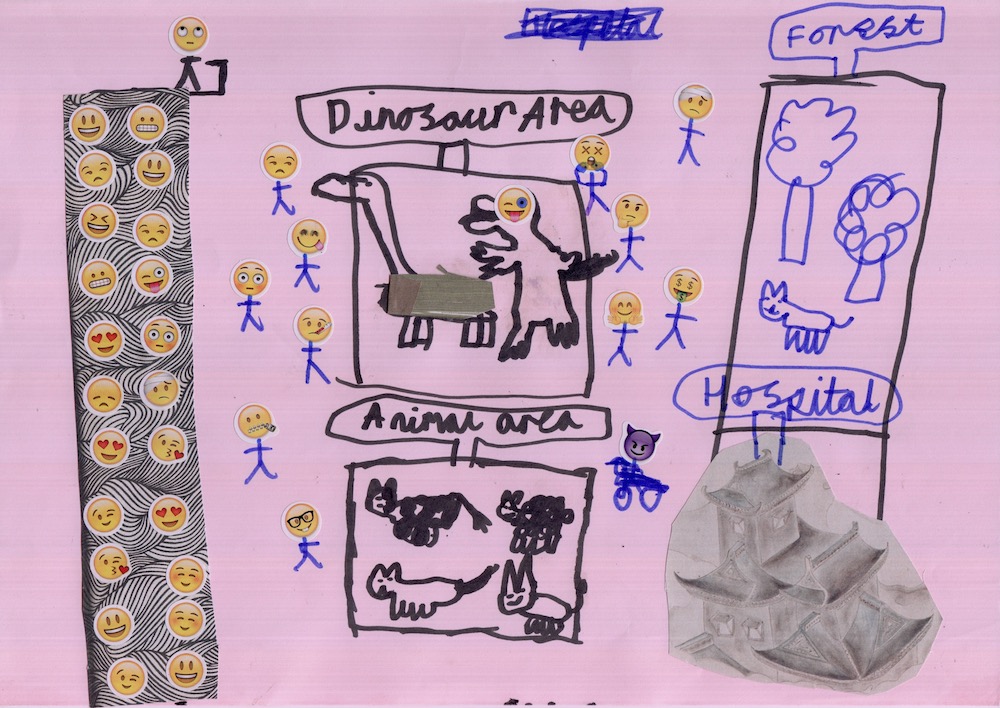
From these workshops, a number of ideas will be progressed and developed through co-creation and ideation processes with residents and other stakeholders, using an iterative process of prototyping, testing and refining.
Discussion
Childhood obesity is clearly a growing and urgent social challenge that concerns society as a whole. Worryingly, obesity is another symptom of geographical and socio-economic inequality, with more deprived areas showing higher levels of childhood obesity than more affluent areas. As a result, it has never been more important to understand the specific local context when tackling such a pressing social challenge. In this case, the inclusive design methodology has enabled the research team to gain a deep understanding of the local context through working with the community to identify four hyperlocal themes: ‘boredom’, ‘safety’, ‘high street’, and ‘cultural differences’, which build on overarching themes of childhood obesity, such as nutrition and activity, to make future design interventions more relevant to the context and engaging to the community. 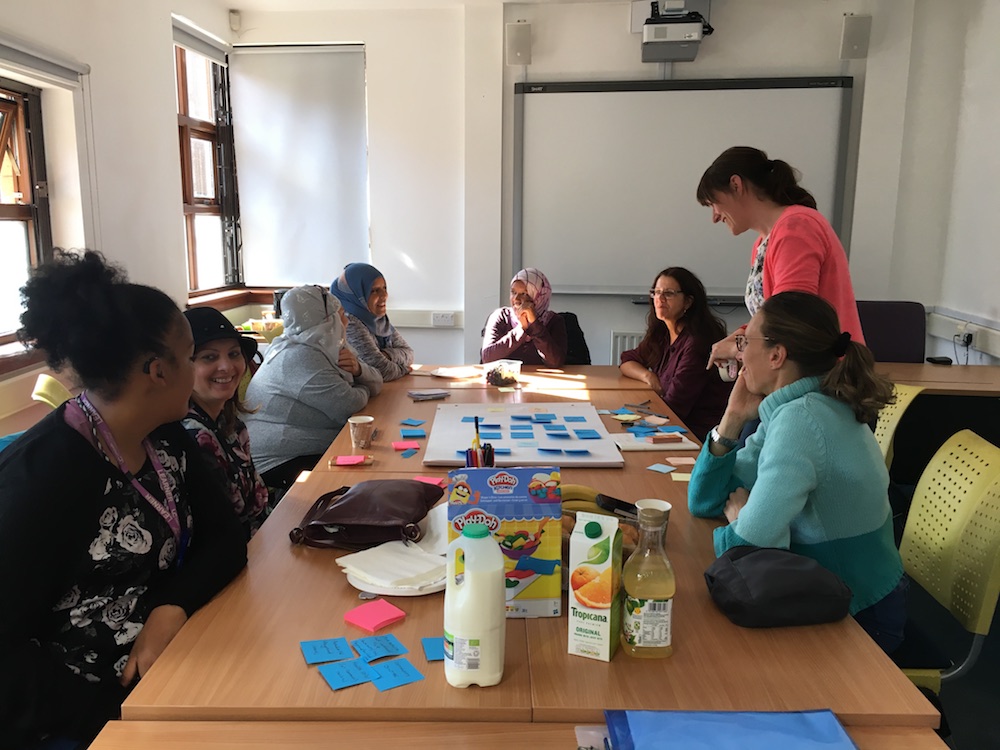
Of course, engaging the community comes with its own challenges, as the project researchers have found. One of the main difficulties is ensuring that the project reaches a variety of local people across all cultures and socioeconomic backgrounds. While the project has been met with plenty of enthusiasm from local residents and organisations, it’s often the people who are already very engaged in local affairs and the community who are keen to participate. As well as designing relevant workshops, a big challenge lies in attracting engagement from those in the community whose voice may not always be heard. Another challenge of co-designing with non-designer community members is to advance their ideas beyond the conventional, and to encourage them to be more ambitious and creative. One way this project has done that is through the workshop methods that encourage playfulness in children and adults alike. Another way these ideas will be progressed into prototypes and interesting concepts is with the involvement of the design community in a week-long workshop facilitated by the project researchers. This took place at the end of October and brought together young designers and Stockwell community members.
This design research work is part of a nine-month project that will continue until February 2019, and it’s the first part of a longer-term strategy for tackling childhood obesity nationally – and even internationally – in deprived inner-city neighbourhoods. The project aims to continue working closely with the community to develop a range of interventions of different levels of investment. These will then be prototyped and developed. While this research has been carried out in an intensely localised environment, which has Stockwell and its people at the heart, the aim is for an output that has scalable, replicable ideas for other similar neighbourhoods across the UK.
Authors
Carmel Keren is a research associate at the Helen Hamlyn Centre for Design (HHCD). Gail Ramster is a senior research associate and Dr Jak Spencer is a research fellow, also both at HHCD.
Further information
Children’s commissioner. A Children’s commissioner’s report on the importance to children of play and physical activity. August 2018. Accessed 4 October 2018. https://www.childrenscommissioner.gov.uk/wp-content/uploads/2018/08/Play-final-report.pdf
Lambeth Council. Demographic factsheet. May 2015. Accessed 4 October 2018. https://www.lambeth.gov.uk/sites/default/files/ssh-lambeth-demography-2015.pdf
References
- London Health Commission. ‘Global City Comparisons Overview’; September 2016. Accessed 4 October 2018. https://www.healthylondon.org/wp-content/uploads/2018/01/London-Health-Commission-Global-City-Comparisons-overview.pdf
- Guy’s & St Thomas’ Charity. BiteSize: Breaking down the challenge of inner-city childhood obesity; February 2018. Accessed 4 October 2018. https://www.gsttcharity.org.uk/what-we-do/bitesize
- London Datastore. Prevalence of Childhood Obesity, Borough, Ward and MSOA; 2017. Accessed 21 September 2018. https://data.london.gov.uk/dataset/prevalence-childhood-obesity-borough
- Battersea Power Station Foundation. Community needs in Lambeth and Wandsworth; 2017. Accessed 21 September 2018. http://bpsfoundation.org.uk/wp-content/uploads/2017/01/Community-Need-in-Lambeth-Wandsworth-report-January-2017.pdf
- Lambeth Council. State of the Borough Report; 2012, p11. Accessed 4 October 2018. https://www.lambeth.gov.uk/sites/default/files/State-of-the-borough-2012.pdf
- Boseley, S. Amsterdam’s solution to the obesity crisis: no fruit juice and enough sleep. The Guardian, 14 April 2017. Accessed 21 May 2018. https://www.theguardian.com/society/2017/apr/14/amsterdam-solution-obesity-crisis-no-fruit-juice-enough-sleep
- Sheldon, T. Whole city working against childhood obesity. British Medical Journal; 2018. Accessed 14 June 2018. https://www.bmj.com/content/361/bmj.k2534
- Clarkson, J and Coleman, R. History of inclusive design in the UK. Applied Ergonomics; January 2015.
- McGinley, C and Dong, H. Designing with information and empathy: delivering human information to designers. The Design Journal; 2015, 14:2, 187–206.
- Spencer, J. Design for dynamic challenges: key attributes of designers for leading interdisciplinary research and projects. Diseña Journal; 2018, 13(13), 84–109. ISSN 2452–4298.
- Millner, N. Involving others: from toolkit to ethos for a different kind of democracy. Open Democracy; 2013. Accessed 22 September 2018. https://www.opendemocracy.net/naomi-millner/involving-others-from-toolkit-to-ethos-for-different-kind-of-democracy
Organisations involved


